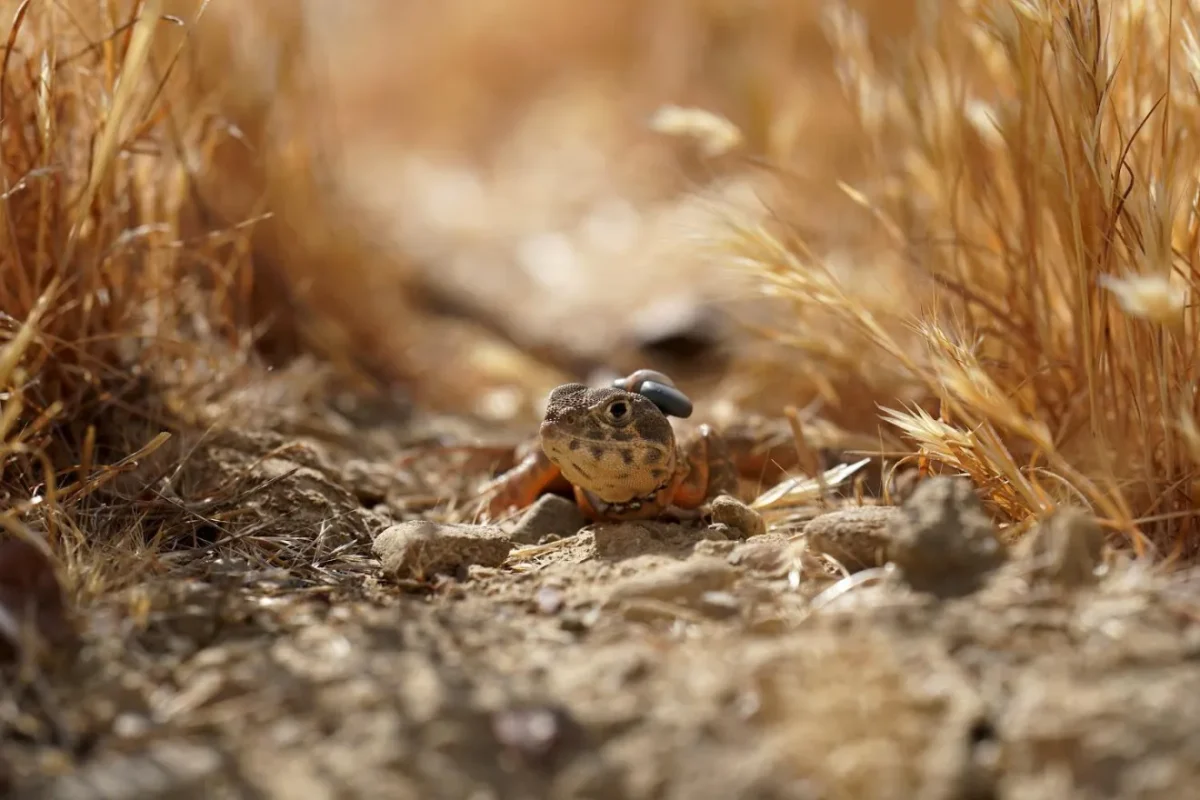California’s Central Valley sits near the center of what is known as the California Floristic Province, which is one of the few “biodiversity hotspots” in the world. This means that in the state, there are thousands of species of plants and animals, many of which are endemic, meaning their species is only prominent in one region.
Out of all the species of plants and animals that are specifically endemic to the Central Valley, a few have caught the attention of the Fresno Chaffee Zoo and other researchers in the Valley, including some who are conducting parts of their research at Fresno State.
One species that has been closely studied by Fresno researchers is the blunt-nosed leopard lizard.
Beka Shannon, a Fresno State biology student and intern at the Fresno Chaffee Zoo’s Blunt-nosed Leopard Lizard Conservation Program, explained some of the unique features of this species of lizard.
“They are named leopard lizards due to the spotted and striped pattern down their back,” Shannon said. “Their coloration also changes during the breeding season. Females will get gorgeous bright orange spots along their side and males will get a solid splotch of rich salmon coloration along their sides. They are very beautiful.”
The blunt-nosed leopard lizard, scientifically known as Gambelia sila, is distinct from the long-nosed leopard lizard of North America. The long-nosed leopard lizard, or Gambelia wislizenii, has no special conservation status and is not endangered.
Unfortunately, this is not the case for the blunt-nosed leopard lizard.
Rory Telemeco, director of Conservation Science at Fresno Chaffee Zoo and assistant professor of biology at Fresno State, said that while the blunt-nosed leopard lizard is found in the San Joaquin Desert ecosystem, so much of that ecosystem, around 90% to be precise, has become inhospitable to this species over the last few decades.
The existence of this endangered species of lizard is in jeopardy mostly because of massive habitat loss that has spawned from urban development, agriculture, oil wells, off-road vehicle usage along with other factors in the region.
Telemeco went on to say that the habitat loss has occurred in a relatively short time, specifically over the last 150 years or so.
“In this short time, the animals and plants that live in the San Joaquin Desert went from occurring throughout the western San Joaquin Valley and foothills to only existing in tiny pockets, like islands separated by a sea of inhospitable urban areas and agriculture,” Telemeco said. “These islands are too far apart for animals to travel between them, so when one ‘blinks out’ there is no way for the species to recolonize.”
This is a species that now mostly exists in about a 70-mile radius of Fresno, he said. Researchers and biologists in the community have taken on the responsibility of trying to restore its population.
“In the past, if a major storm or disease hit an area and wiped out a population, it wasn’t that bad for the species,” Telemeco said. “New individuals could move in next year. Now, the remaining populations are so far apart that when a population is wiped out by an extreme event, it cannot be recolonized without human help.”
This “human help” has been carried out by research teams involved with Fresno State, Fresno Chaffee Zoo and other local organizations such as the Bureau of Land Management, California Department of Fish and Wildlife and U.S. Fish and Wildlife Service.
Emily Bergman, a conservation technician on the Fresno Chaffee Zoo’s Blunt-nosed Leopard Lizard Conservation Program, said that the primary goal of the project is to “propagate blunt-nosed leopard lizards in captivity and repatriate them in the Panoche Hills where they nearly went extinct.”
Bergman is currently a master’s student at Fresno State, studying the stress physiology, or the physical traits, damage and other conditions of an organism that show signs of environmental stress of the species.
Her primary objective on the project is to lead a team that tracks these lizards out in their habitat, which mostly entails combing through the desert, placing radio collars on the lizards and helping collect data about their habits and survival needs in the wild. She also collects data on a captive colony of lizards at the zoo that are bred in order to later be released into their natural habitat.
“We intend to study stress physiology, behavior and habitat requirements while breeding and releasing them to better understand what makes these lizards thrive in the wild,” Bergman said.
Fresno State also has a role to play in the research being done on this species. Telemeco has a lab on campus that is used for researching these lizards.
“Not only did graduate and undergraduate students help contribute to gathering data on these lizards by creating research or masters projects, but some undergraduate biology students volunteered their time to help maintain the lab equipment, pack field gear and help capture and process lizards on the excavation days at the end of the season,” Shannon said. “That’s actually how I initially got involved in this project, as a student volunteer in the lab and in the field.”
This species of lizard is one that not many people in the Central Valley have heard of, and up until fairly recently not much research on conserving the species was being done.
“In 2017, I moved to Fresno to become an assistant professor in the Biology Department at Fresno State, and I began looking around for a species to study and possibly conserve,” Telemeco said. “I had heard of blunt-nosed leopard lizards and knew they were endangered, but I had never seen one and did not know what work was being done. I was also surprised to learn that most people in the Central Valley had not heard of these amazing animals that live here and nowhere else on Earth. I decided to use my skills and training to try to protect this unique species.”
The blunt-nosed leopard lizard is not just important due to the fact that it is endemic to Central California, but it is also an important part of the habitat it resides in.
Telemeco explained that they are important components of San Joaquin Desert ecosystems, functioning as predators for smaller species, primarily insects and spiders. They are also useful food for larger species such as the San Joaquin kit fox, coyote, American badger and loggerhead shrikes.
There are around 20 Fresno State students, 14 Fresno Chaffee Zoo employees and a few biology professors from around the state involved in the process of researching and restoring the blunt-nosed leopard lizard.
Keeping a functioning ecosystem intact usually involves keeping each naturally occurring and non-invasive part of the ecosystem alive and well. This project aims to do just that, and the ultimate goal is to keep an animal that is native to the community happy and healthy.
The Fresno Chaffee Zoo has just opened a new building, the Conservation Action Center, where animals like the blunt-nosed leopard lizards that are bred in captivity can call home while they are at the zoo.
The building provides a “state-of-the-art climate-controlled space for rearing animals in captivity and collecting measurements,” according to Telemeco.
He added that there are windows on the building so that zoo visitors can see the animals and the process of getting the animals ready to be released back into the wild.
At the forefront of the Conservation Action Center will be Steven Sharp, the zoological animal manager for Asia West at the Fresno Chaffee Zoo. Sharp oversees the day-to-day husbandry and reproduction of the blunt-nosed leopard lizard colony at the zoo, which is one of the most crucial aspects of reintroducing this species into the wild in a meaningful capacity.
“Projects like this are why I became a zookeeper, to be able to use my skills to help endangered species thrive in their natural environment,” Sharp said. “We have an opportunity to rewild an endangered species into its natural habitat and I think that is pretty amazing to be a part of.”
More information on this species and the current conservation efforts surrounding it can be found on the Fresno Chaffee Zoo’s website, and the Bureau of Land Management’s website.






